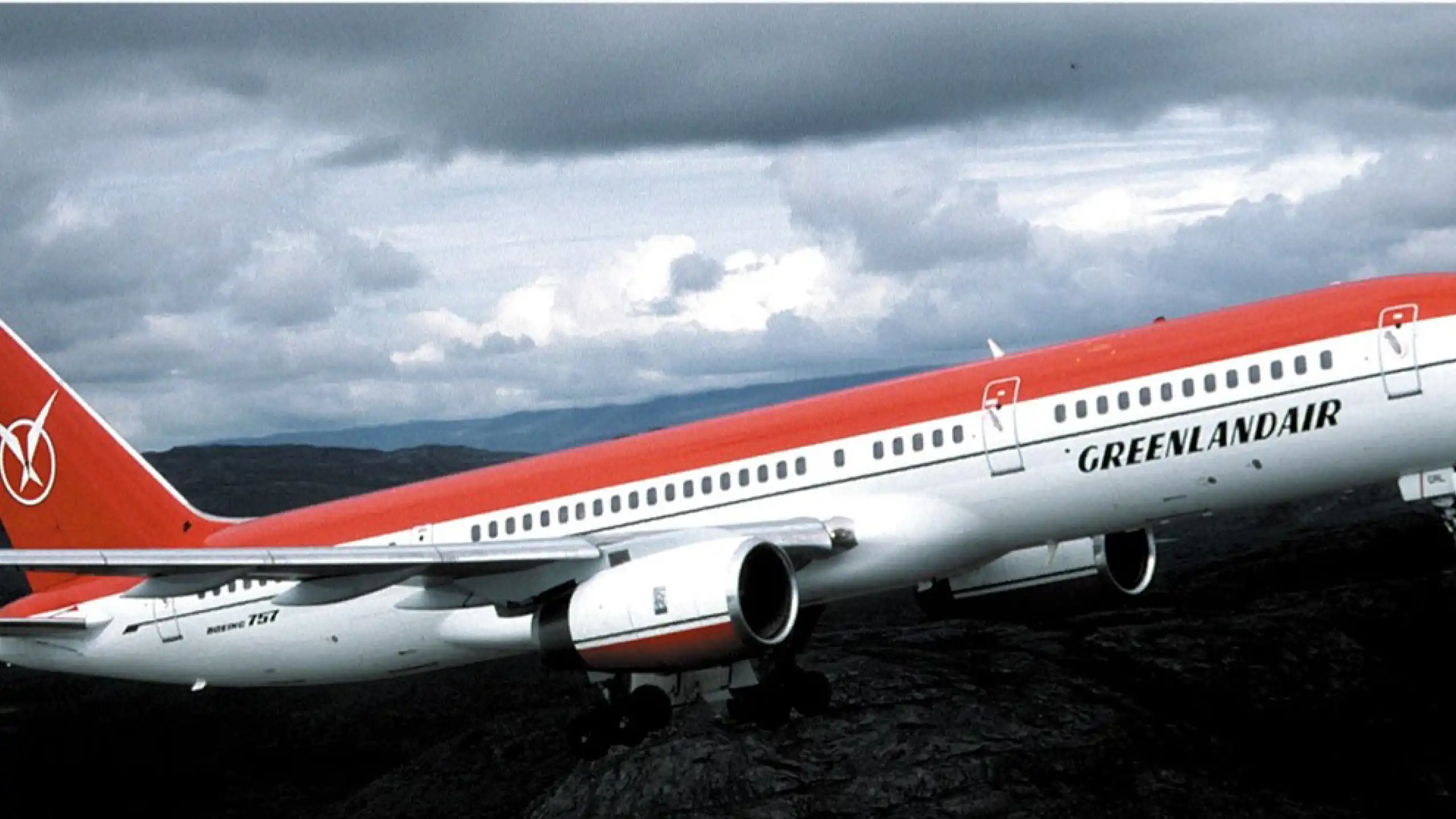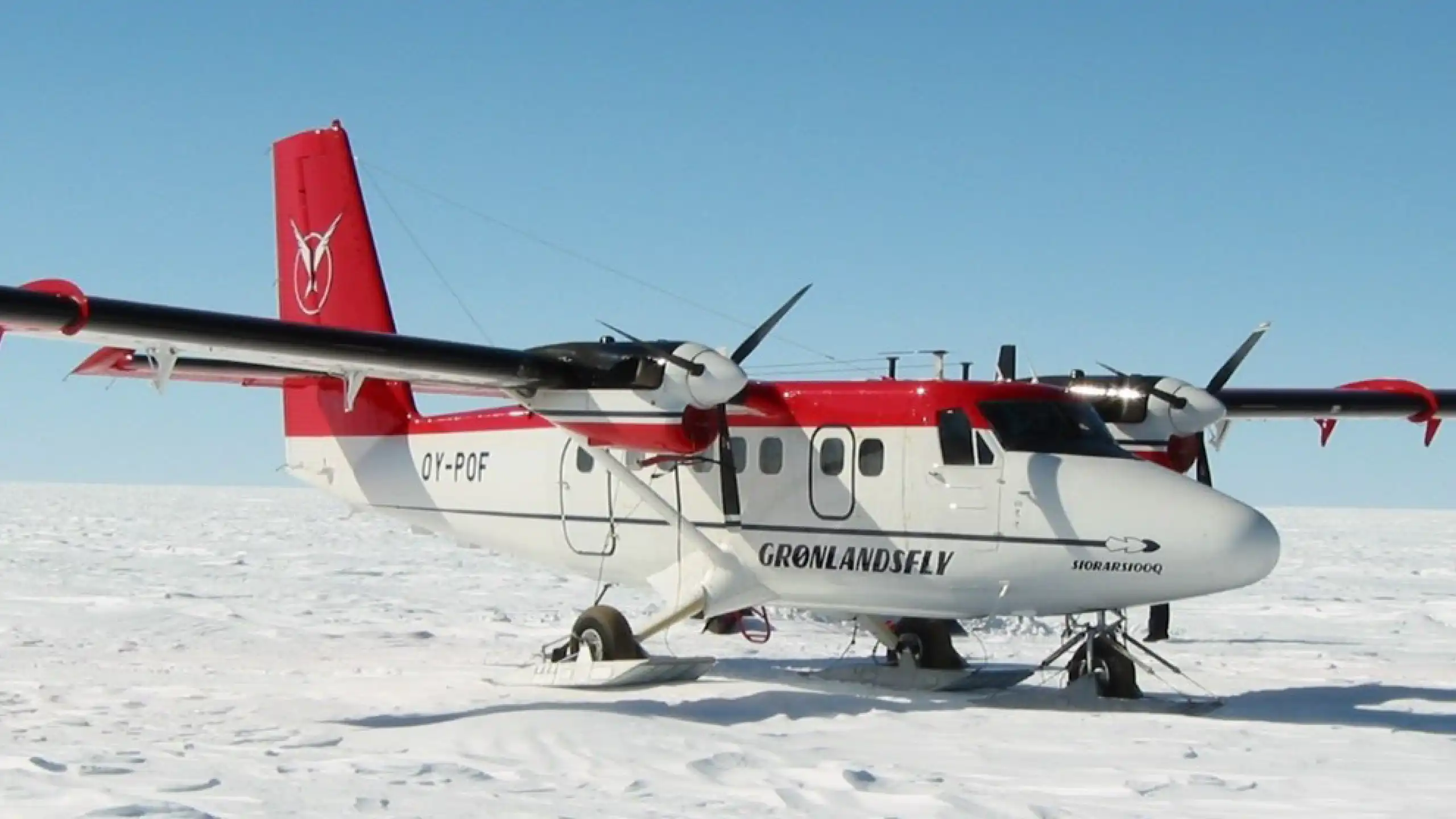Det kan tage op til 30 sekunder for oprettelsen....
Sign up for Club Timmisa
You have now signed up for Club Timmisa
You must now log in to the portal, with your new user, by clicking on login in the right corner.
Change password
You will receive a code in your email, which you can use to change your password.
We can not find this email in the system
Change password
You will receive a code in your email, which you can use to change your password.
Eight signs, a letter and a number
- a small letter
- a capital letter
- a number
- a symbol
An unexpected error has occurred
Change password
Your password has now changed!
Details
Flight number
Dato
Airline
Travel time
Departure
Departure
Arrival
Arrival
Add trip
Your reservation number is six characters long and can contain both numbers and letters
Feel free to fill in the blank
Reservation does not exist
An unexpected error has occurred
Add trip
Your reservation has been added
1916
The history of Air Greenland
Air Greenland's history stretches back more than 60 years, and has evolved in many different directions.
When the company first started under the name Greenland Airlines, it was with the primary task of servicing the United States Air Force when their four DYE stations were to be supplied.
Since then, we have developed into much and more, and today we run a wide range of business, which includes domestic and foreign traffic, charter assignments and tourism.
Below we will take you on our journey, where we will mainly tell you about the great things that have happened in our lifetime.
-
7. november 1960 Our company, then called Grønlandsfly, is founded by SAS and Øresund, with the purpose of supplying the Dye stations in Sisimiut and Kulusuk. For the task, we charter a DC-4 from Iceland and two Sikorsky S-55 from Canada. We are also taking over Wet-lease agreements from KGH, which has been responsible for the flight in Greenland since 1958. The agreements include Catalinas and Otters.
-
1962 The Greenland National Council and KGH join our company's circle of owners, and the four shareholders each own 25% of the company. A Catalina accident in Nuuk, in which 15 people lost their lives, is decisive for us replacing the seaplane with helicopters.
-
1965 The first S-61s arrive in Nuuk, and with them, Greenland Airlines is among the first airlines in the world to fly passengers by helicopter. Since then, we have acquired another five S-61s, and the helicopter will be a hallmark of domestic aviation in Greenland. Heliports are being built in six cities. The catalina are phased out in the same connection.
-
1966 From the beginning, the vision has been for Greenland Airlines to help lift Greenlandic society. Six years after the foundation, we can finally start training our traffic assistants ourselves.
-
1970s Heliports are being established in several towns along Greenland's west coast. In ‘72, a helicopter is deployed in the Ammassalik area, and in ‘75, district flight is introduced in Thule. Greenland Airlines is hereby developing the world's largest helicopter route network.
-
1972 The S-61s are used for all kinds of tasks, from ambulance flying to sling tasks. The subsidiary Greenlandair Charter (also known as Glace) is established with a focus on commercial customers, in particular the US Air Force, and we acquire a Bell 206 for the servicing of the zinc mine The Black Angel. Our helicopters are even chartered for offshore tasks in the UK and North America, among other places.
-
1974 The number of employees in Greenland Airlines is steadily increasing, and we are training the first aircraft mechanics.
-
1979 The runway in Nuuk will be built and Dash 7 will be acquired. The aircraft type is a completely new type, and Grønlandsfly is among the world's first customers to buy the machine, which has been specially developed with a large load capacity to be able to operate on short runways.
-
1980s With the introduction of the Home Rule Government comes a replacement of a number of institutions that have operated in Greenland over the years. Previously, it was KGH that issued the airline tickets; in these years, Grønlandsfly together with KNI founds the company Grønlands Rejsebureau. In Ilulissat we take over Hotel Arctic, which was built at the same time as the airport.
-
1981 In collaboration with the Canadian company First Air, the Nuuk-Iqaluit route will be created and operated for 13 years. The route was closed in 1994 due to a low influx of passengers but was later restored, by several laps. Most recently, the route was flown in 2012-14. The route to Reykjavik is opened the same year, and three years later it was extended so that the Dash-7 flies on to Nerlerit Inaat, near Ittoqqortoormiit.
-
1983 The runway in Ilulissat is built, and from here the skeleton of the new structure is formed - the Dash 7s will operate the routes between the five runways in Nuuk, Kangerlussuaq, Narsarsuaq, Ilulissat and Kulusuk. From the five airports, the helicopters then operate the surrounding districts.
-
1986 n collaboration with Icelandair, Greenland Airlines opens the Narsarsuaq-Keflavik-Copenhagen route, and SAS's monopoly on Atlantic flights is broken. Already two years later, the weekly flight is increased to two flights a week with the Icelandic Boeing 727.
-
1990s In the early 90s, the Atlantic flight is updated, and with a leased plane from the then Maersk Air, we drop the stopover in Keflavik for a direct flight between Narsarsuaq and Copenhagen. Even more short runways are being built, and we can invest in additional Dash-7s, so the fleet now counts five of the reliable machine.
-
1992 Our subsidiary GLACE is no longer profitable after the US Air Force has left Greenland and their four DYE bases. The company is closed down and its assets are incorporated into Greenland Airlines. This transforms our charter business into an internal department.
-
1998 Another showdown follows SAS's position on the Greenlandic route network, as Greenland Airlines presents its newly acquired Boeing 757, ‘Kunuunnguaq’. The plane will be deployed at Kangerlussuaq-Copenhagen, and in the following years the two companies will fly almost wing to wing.
-
2002 Grønlandsfly will be Air Greenland in April, and the well-known, red design with the snow flower is introduced as a signal that we are heading towards new times. That same autumn, SAS throws in the towel and leaves Greenland. With SAS's exit, we will acquire an Airbus 330-200, ‘Norsaq’, which will land for the first time in November. The machine has better freight capacity. With the new machine, passengers now experience that we match in service and comfort. Ticket prices are not rising either, simply because we are now alone on the flight to the outside world.
-
2003 Air Greenland leads another victory against SAS, as we win the five-year contract with the US Air Force for the flight between Pituffik (Thule Air Base) and Copenhagen. The contract has since been renewed several times.
-
2004 Air Greenland is setting up its website and passengers can now buy their tickets online. Getting used to it is not so fast, but in 2009 over 30% of ticket purchases were made online, and it only becomes more normal from there.
-
2007 SAS returns to Greenland when the company opens a route in the high season, and so does Icelandair with a route between Reykjavik and Nuuk. While Icelandair continues to maintain its flights between the two capitals, SAS must once again abandon its flights in Greenland.
-
2010 Dash-7 has flown the Greenlandic route network for 30 years. It's time for an upgrade, and this spring the first two Dash-8s are ready to take over from their predecessor.
-
2015 Air Greenland says goodbye to the last Dash-7, and the internal route network is now completely on the wings of the Dash-8. We are buying 30% of the Icelandic helicopter company, Norðurflug, which we will sell again in 2021. This year we are acceding to the UN's 17 World Goals.
-
2019 Air Greenland will be 100% owned by Greenland, as the Danish state and SAS sell their shares to the Greenland Home Rule Government. It is decided that we will buy a brand new Airbus 330-880neo, the largest investment in our company's history. Club Timmisa, our customer club which provides the traveler with benefits and information about the journey from start to finish, is launched. It will finally be decided which of the world goals the future sustainability strategy should lean on.
-
2020 Covid-19 puts the world on its knees and Air Greenland has to lay off 95 positions.The company is celebrating its 60th anniversary with a broadcast in KNR and a special issue of the inflight magazine Suluk.
-
2021 Air Greenland signs a letter of intent with Avolon on the purchase or leasing of electric aircraft, and the first sod is cut against CO2-neutral aviation.


